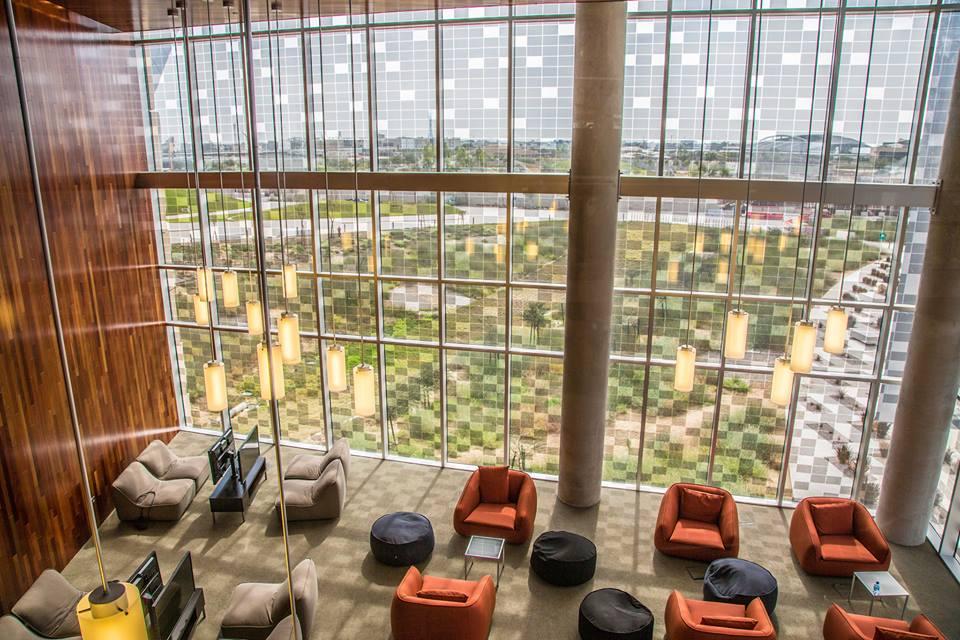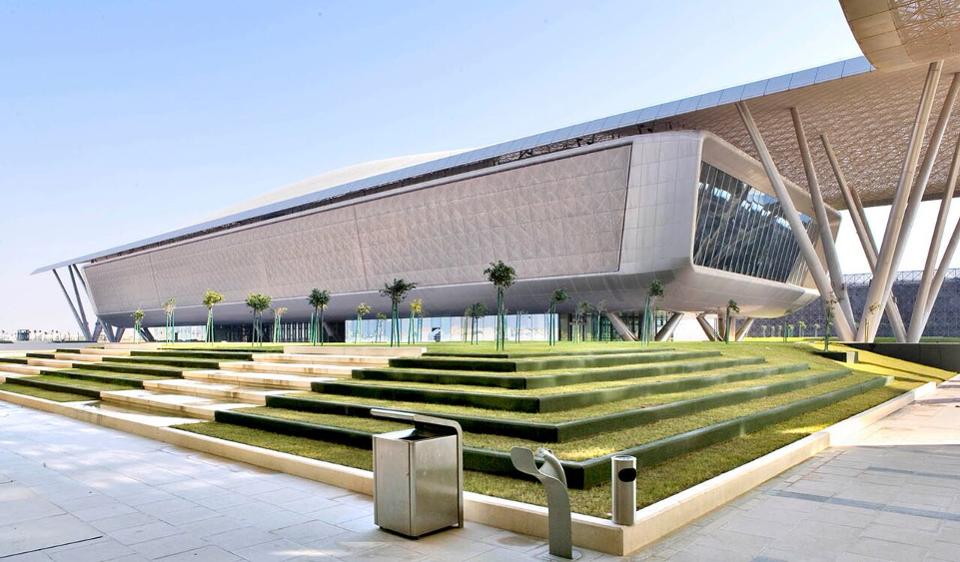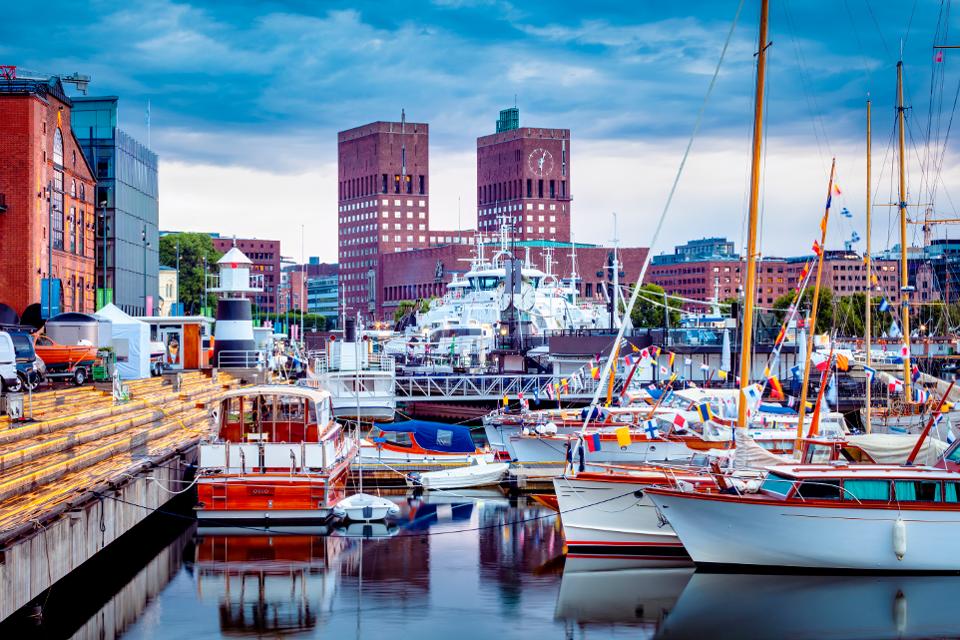 As you fly into Doha and cast your eyes over the gleaming towers of West Bay or the striking new facilities emerging on a daily basis both in central Doha and Education City, it can appear incredulous to countenance Qatar as a nation afflicted by the resource curse. Indeed, it’s GDP per capita of $72,700 marks it out as one of the wealthiest nations on earth.
As you fly into Doha and cast your eyes over the gleaming towers of West Bay or the striking new facilities emerging on a daily basis both in central Doha and Education City, it can appear incredulous to countenance Qatar as a nation afflicted by the resource curse. Indeed, it’s GDP per capita of $72,700 marks it out as one of the wealthiest nations on earth.
Yet, in an economy whereby 60% of GDP and 85% of exports are derived from oil and gas, the need to diversify is evident, not least due to the decline in oil prices since 2014 that many believe is the new normal and the political and economic blockade that was imposed by some neighboring countries in June 2017.
The concept of the resource curse emerged a few hundred years before the term was first coined by economist Richard Auty. The term describes the apparent difficulty many countries that have abundant natural resources have in terms of growing their economy.
Institutions and Macroeconomic Policies in Resource-Rich Arab Economies, a new book by Kamiar Mohaddes, Jeffrey B. Nugent, and Hoda Selim, explores the topic through the particular lens of the six Arab nations that make up the Gulf Cooperation Council. The authors argue that the challenges imposed by the resource curse are not so much due to the price volatility of the resource itself, but rather weak institutions.
Qatar have attempted to overcome this via the creation of the Qatar Foundation in 1995, which aimed to unlock the human potential of the nation via education, innovation and entrepreneurship. In the two decades since the institution was forged, they believe that the foundations for success have been established, with the centrepiece being the Education City district that houses the educational, scientific and entrepreneurial efforts of the city.
Unlocking human potential
The 12 square km Education City is home to a wide range of K12 and higher education facilities, including seven international campuses from institutions such as Northwestern, Texas A&M and Carnegie Mellon universities, with HEC Paris then offering executive MBAs from its campus in West Bay. Rather than providing a full range of programs, each university specializes in particular disciplines so that each campus provides a complementary rather than competitive experience. The international universities are complemented by Qatar’s own Hamad Bin Khalifa University which offers a range of research and graduate programs.
Collectively there are over 3,000 students from over 60 nations on campus, undertaking 55 programs. These facilities help to fulfil the ultimate ambition of the project to create good jobs for the citizens of Qatar by equipping them with the skills they need to thrive in the future of work.
The campus is complemented by a wide range of facilities that aim to capture and combine the knowledge produced on campus via a range of dedicated research facilities. Qatar Foundation Research, Development and Innovation strives to develop innovative solutions, both for the unique challenges faced by the nation, but also those of the wider world.
The centrepiece of the institute is the Qatar Science & Technology Park, which brings together applied research and technology innovation, incubation and entrepreneurship. The park, which has been operating for a decade, has created a free zone and business park to encourage multinationals to rub shoulders with researchers and startups to generate technology-driven businesses.
The park aims to support enterprises at all stages of their development, from early stage product development via the incubation center, to venture capital and joint R&D projects for more advanced startups.
To date, 20 startups have been created and sit alongside over 50 multinational companies, including Cisco, Microsoft, General Electric, and a who’s who of the global oil and gas community.
Core sectors
The park is bordered by a range of biomedical innovation facilities, including the Qatar Biobank and Genome Programme, and the cutting-edge Sidra Medicine teaching and research hospital specializing in women’s and children’s health. These projects sit alongside the National AI Strategy that was published recently, with biomedicine and precision medicine one of the pillars of the strategy.
To date, over 15,000 Qataris have had their genomes sequenced as part of the Qatar Biobank project, with the ultimate aim to ensure all citizens have their genomes sequenced, in what is hoped will be the world’s leading repository of Arab genomic data in the world. This will feed into the country’s precision medicine program that underpins the Qatari National Health Strategy 2018-2022, which strives to take a more preventative and community-based approach to medicine and healthcare.
This is especially important as the country suffers disproportionately from lifestyle-related conditions such as diabetes and obesity, with nearly 70% of mortalities occurring from these conditions.
Room to grow
How effective have these efforts been in driving the Qatari economy? The results to date have been mixed. There is no doubt that the city is awash with incredibly impressive facilities, but as Mohaddes et al highlight the inefficient spending patterns that are common in oil-rich countries, combined with insufficient public scrutiny, results in significant waste.
While it’s not clear that Qatar has personally been beset by waste, or more mendaciously fraudulent behavior, the output from the considerable investments has been modest. Indeed, many of the gleaming facilities are crying out for the throngs of people and energy that most characterize the very best innovation hubs around the world. This is undoubtedly a long-term project, and while the economic realities of the country do allow for a long-term investment approach to be taken, there remains uncertainty about whether the oil price slump and the economic blockade have provided a sufficiently significant ‘burning platform’ to trigger the kind of changes required to truly shift the economy away from hydrocarbon-based industries.
Indeed, while direct revenue from oil and gas fell to below 50% of GDP in 2017 (from 60.1% in 2011), this hides the fact that much of the other half of the economy is heavily reliant on the oil and gas sector for its revenues. This is reflected in the 80% of exports that are accounted for by hydrocarbons.
Nordic noir
Norway has been in a similar situation since oil and gas deposits were discovered in the North Sea shelf in the 1960s. Since then, oil and gas has regularly contributed around 20% of national GDP, with figures in 2012 revealing that the petroleum sector constituted 23% of GDP, 30% of government revenues and 52% of total exports. With estimates that nearly half of the petroleum resources on the Norwegian shelf have been produced however, it’s clear that diversification of the economy is necessary.
The factors prevalent during the ‘Dutch disease’ of the 1960s have also been evident in Norway, as high oil revenues led to increased public consumption, which in turn led to higher domestic costs. Indeed, in 2012 hourly wage costs in the manufacturing sector were 69% higher than the European Union average, and while this can’t account for the entire decline in Norwegian manufacturing, it has undoubtedly played a part.
Nonetheless, research comparing Norway’s economic performance with that of Sweden, who are in many ways comparable, albeit with no oil and gas reserves to speak of, found that even accounting for petroleum-based revenue, the Norwegians were doing better than their Scandinavian neighbors. So how did they do this?
Research from the University of Oslo suggests the quality of Norway’s political institutions is a major factor, with strong protection of property rights, reliable public bureaucracy and minimal corruption all contributing to robust economic growth. Indeed, the Global Innovation Index, produced each year by INSEAD and WIPO, places Norway in 19th place, with the quality of their institutions ranked 2nd in the entire world.
This contrasts noticeably with Qatar, who linger in 65th place in the index, and are a noticeable outlier in the high income countries covered by the report for their poor performance. Qatari institutions perform particularly poorly, with the overall business environment ranked down in 91st place globally, which coupled with poor performance in primary and secondary education and the investment landscape hamper their attempts to diversify the economy successfully.
Institutional advantage
The relative advantage Norway enjoys is therefore partly explained by the fact that the country already had a long and stable tradition of democratic rule by the time oil was discovered.
This has allowed the country to not only attempt to sustain some of the success historically achieved in manufacturing, but flesh out complimentary prominence in related areas such as shipbuilding and geological services.
For instance, the Katapult Ocean aims to build on the country’s rich nautical heritage to encourage entrepreneurship in areas such as ocean health and aquaculture, while StartupLabs accelerator specialize in Industrial IoT startups that build upon the engineering expertise established after extracting oil and gas from the North Sea over the past 50 years.
In many ways, the slump in oil prices since 2014 have been a boon to the startup scene in Oslo as so many engineers have either voluntarily or otherwise chosen to deploy their talents in non-oil disciplines, with many choosing to create startups. As recent research from MIT reminds us, older entrepreneurs are often better equipped to handle the rigors of startup life, not least because they have well developed networks from their career to date that can be tapped into when growing the business.
This is certainly the case in Norway, where many of the corporate partners required to prove the merits of an idea are the large oil and gas companies so many of the entrepreneurs have left.
Despite this, there are clear challenges in attracting the best talent away from the relative comfort and security of a well paid job in the oil and gas sector. When comparing the regular income provided by such work with the high levels of uncertainty inherent in entrepreneurial life and it can be challenging to make the leap, especially when one has family responsibilities and a mortgage to pay. This can be compounded by government policies that continue to tax stock options highly.
“If we’re to truly diversify from oil and gas then it really is all about talent and ensuring we have the best skills possible,” Alexander Woxen, Founding Partner and CEO of StartupLab told me recently. “So access to talent is really a key value driver and what can prevent us from growing, and the tax system is really not helping us to square the opportunity cost considerations people inevitably have when thinking about leaving their job.”
The region has had a degree of success, with companies like FREYR raising several million to build a giga-factory in the Rana Municipality, but even this has largely been overshadowed by neighboring Northvolt, with the Swedish green battery company raising $1 billion to help develop its own facility in Skelleftea.
Curating inspiration
So what lessons can be learned from both countries? A recent paper from Stanford’s Nicholas Bloom recently highlighted five things that hey believes are crucial to the development of successful innovation ecosystems.
- R&D Tax Incentives, with their data suggesting that reducing the cost of R&D by 10% results in an increase in innovation by 10%. Norwegian companies can apply for a 20% deduction in R&D costs, with Qatar offering complete tax exemption for activities conducted at the Qatar Science and Technology Park.
- Promote Free Trade, with research published last year highlighting how valuable free trade can be to innovation, especially in the medium-term. This is an area that Norway has an obvious advantage in, as a member of the European Economic Area provides access to the European Single Market, whereas Qatar is blocked off from neighboring economies.
- Support Skilled Migration, with research showing that an increase in overseas college graduates of just 1% can increase the number of patents per capita by 18%. Norway benefits from free movement from across the EU, and while not without hurdles for non-EU citizens, is a diverse and welcoming country. Qatar has arguably gone even further, with just 10% of the Qatari population native, although with just 44% of the population having completed upper secondary school education, they lack the high skill levels seen in other rapidly advancing countries.
- Train Workers In STEM Fields, with a number of policy options to improve the number of people studying a science, technology, engineering or maths discipline. This is an ongoing challenge for most countries, but with both Norway and Qatar having small native populations, there is a clear requirement to improve the ability to attract talent from overseas.
- Provide Direct Grants for R&D, with Bloom arguing that many research projects have long time horizons, and are therefore best suited to government backing as they can take a longer-term view. Both nations have sovereign wealth funds, but it was noticeable that Norway was primarily investing its windfall overseas in a bid to both keep inflation under control locally and to try and get the best returns. In previous research, Bloom has highlighted how innovation today is getting more expensive, so state support is likely to be ever more important in the coming years.
It is perhaps in the talent side of the equation that both countries struggle with the most. There is an overwhelming temptation when developing innovation districts to focus on the built environment, and it’s hard to escape the huge amount of construction being undertaken in Doha. Streets, subways, faculties and hospitals are all being built, but such infrastructure is not enough to make a community innovative.
22@Barcelona provides a notable illustration of this, as the district, which is widely regarded as one of the pioneering developments of its type, has many of the hallmarks of innovation districts. There is a strong sense that the best ecosystems emerge organically out of existing strengths however, not least as research has shown that London’s TechCity district grew faster before the government decided to back it than afterwards.
What both Barcelona and London enjoy however is an extremely high density of people, who are dispersed across clusters of public spaces. These are what the World Economic Forum refers to as the glue of innovation systems.
As such, ecosystems typically thrive because of the dense social interactions and networks that spread across innovative hotspots. We literally get smarter by being around other smart people. Universities, research parks and so on can undoubtedly help to promote those connections, but so too can bars, parks and cafes.
As such, there is much to be said for the deliberate curation of networks to support the kind of social interactions that are so crucial to the innovation process. This is especially important in cities like Doha and Oslo, which are beset by not only high costs of living, but very lucrative incumbent economies that draw talent to them.
The right ingredients
There is a strong sense that Norway is perhaps further along on this journey than Qatar, and indeed a recent paper from Berkeley suggested that growth in the country would have remained strong, even without discovering oil in the 1960s.
“The data shows that without oil Norway would have developed similarly to Western Europe,” the authors say. “It shows that the real GDP growth for a quarter of a century may have been 1.8% per year without oil, compared to 3.3% with oil.”
Indeed, it’s perhaps illustrative to look at the performance of neighbors such as Denmark and Sweden, both of whom sit at the top of Imperial College London’s recent European Index of Digital Entrepreneurship Systems, which ranks European nations by virtue of their ability to support startups.
Both Sweden and Denmark, for instance, score very highly for the quality of institutions, the market conditions for startups and the quality of human capital. The success of the Nordic nations should perhaps come as no surprise, as Helsinki was rated the best startup ecosystem in the world in last year’s Global Startup Ecosystem report, which was compiled based upon data from over 1 million companies spread across nearly 100 cities around the world. Whilst the US remains the market leader in terms of share of VC investment, there is a clear shift towards Europe and Asia, with China leading the pack.
Clayton Christensen has famously chronicled the challenges organizations have in diversifying income after achieving success with a particular product or service, and the resource curse is that writ large on a national scale. Qatar and Norway are at different stages of their personal battle to move on from the oil bonanza that has so enriched both countries, and while it’s fair to say that petroleum looms large over both economies, there is equally no shortage of effort to encourage fresh industries to emerge. Time will tell just how effective both prove in overcoming the resource curse and ensuring a prosperous future post oil.



